Discovered at Must Farm quarry near Peterborough, the Must Farm Bronze Age settlement is hailed as the best-preserved Bronze Age site in Britain. Often referred to as “Britain’s Pompeii,” this extraordinary archaeological find dates back approximately 3,000 years and offers an unparalleled glimpse into life during the Bronze Age. The site features remarkably well-preserved dwellings and artefacts, providing a unique window into a settlement that was rapidly abandoned following a catastrophic fire. The best time to visit this historic site is during the summer months, when the weather allows for a more comfortable exploration of the outdoor museum.
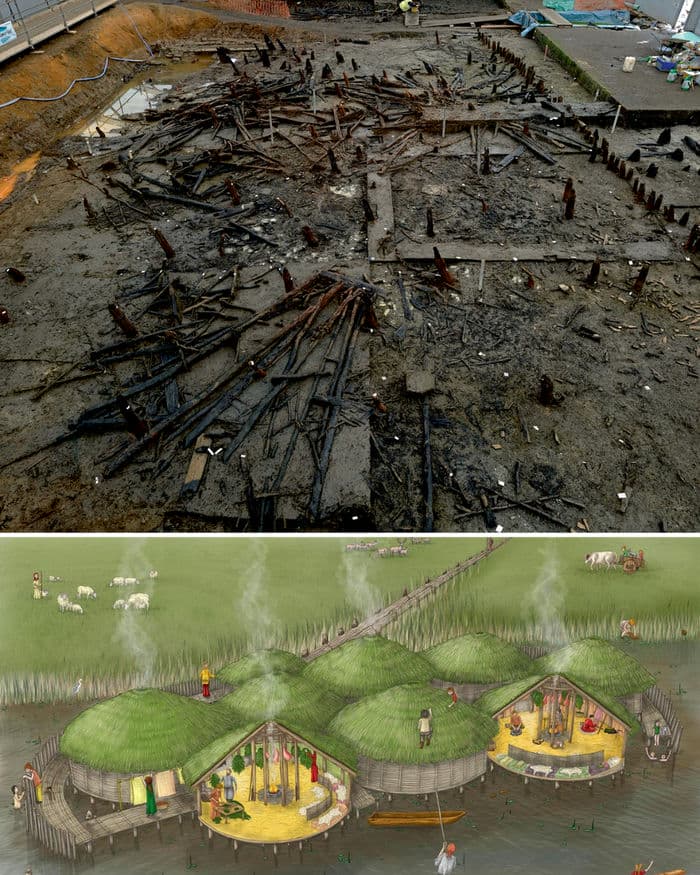
Why Visit Must Farm?
Must Farm offers a fascinating and immersive experience into Bronze Age life. Here are five must-see features at this exceptional archaeological site:
- The Bronze Age Dwellings:
- These stilted houses, preserved after a devastating fire, provide an incredible insight into Bronze Age architecture and daily life. The settlement’s roundhouses were built on stilts above a river, with walls and roofs made of wattle and daub and thatch.
- Remarkable Artefacts:
- The site has yielded an array of well-preserved items, including pottery, textiles, and wooden utensils. These artefacts offer a detailed picture of the domestic life and craftsmanship of the time.
- The Timber Causeway:
- Predating the settlement, the timber causeway features large oak uprights and is reminiscent of the nearby Flag Fen. This structure indicates sophisticated engineering and provides context to the broader landscape use during the Bronze Age.
- Metalwork Collection:
- Must Farm boasts the largest collection of Bronze Age domestic metalwork in Britain, including axes, sickles, and even weaponry like swords and spears. These finds are crucial for understanding the technological advancements of the period.
- Preserved Textiles:
- The site has revealed an extraordinary collection of textiles, preserved by a combination of charring and waterlogging. These fabrics offer valuable insights into the clothing and textile production techniques of the era.
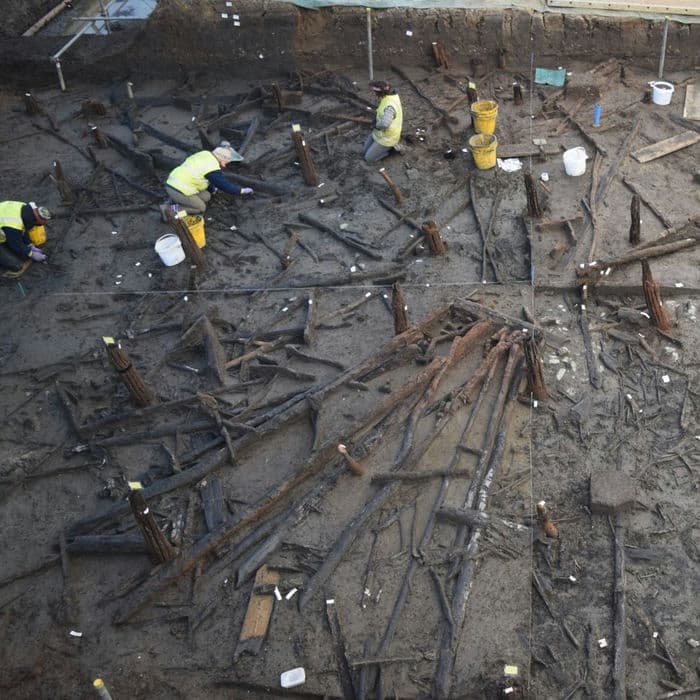
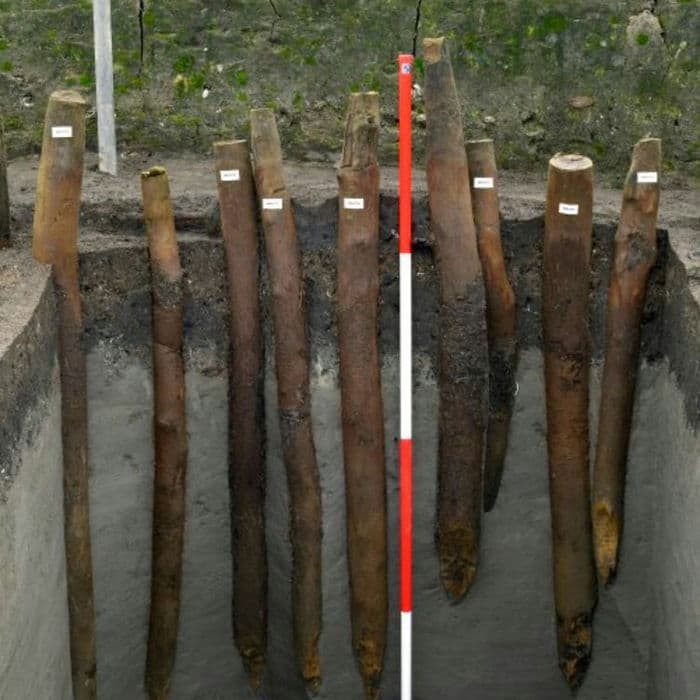

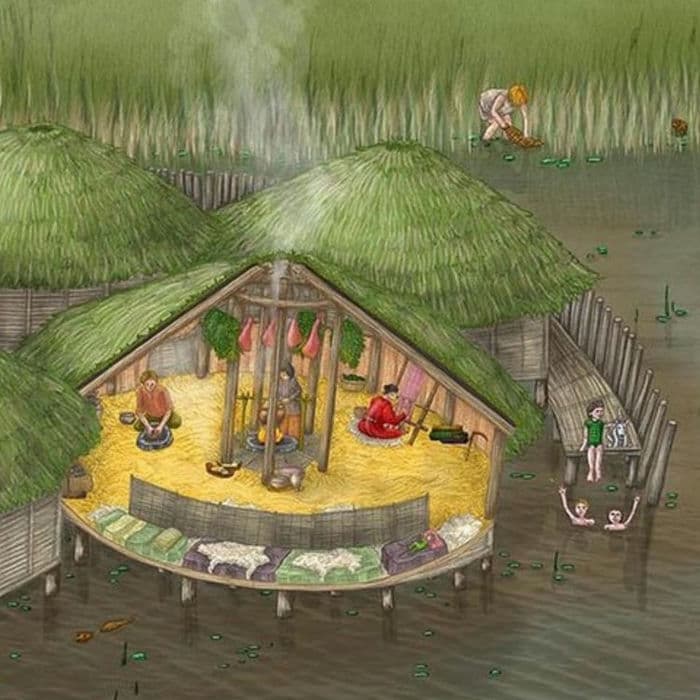
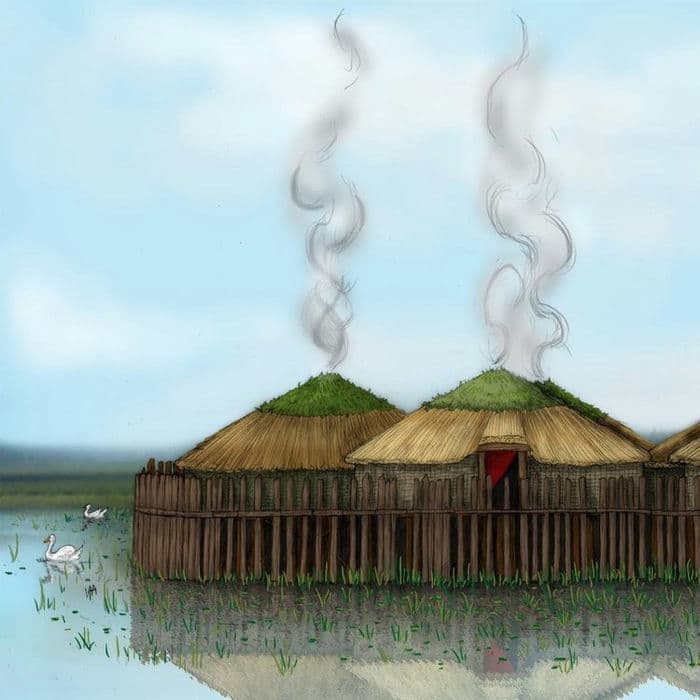
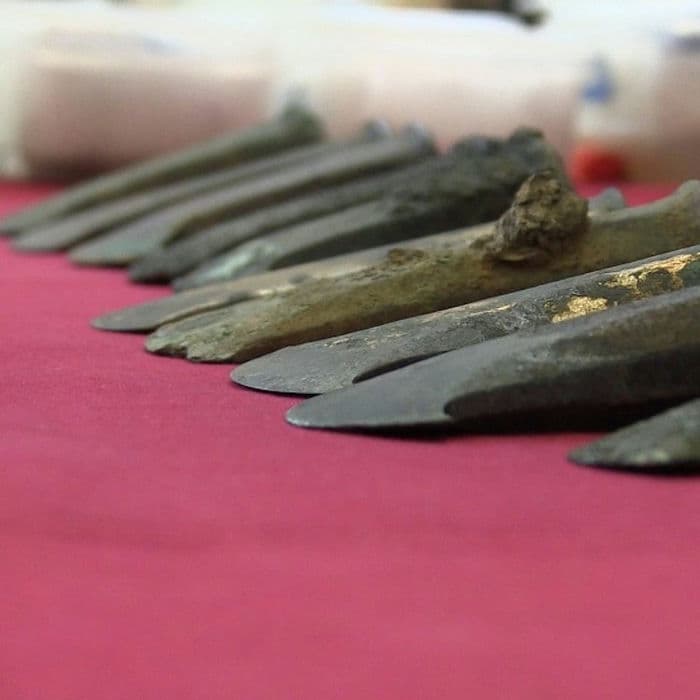
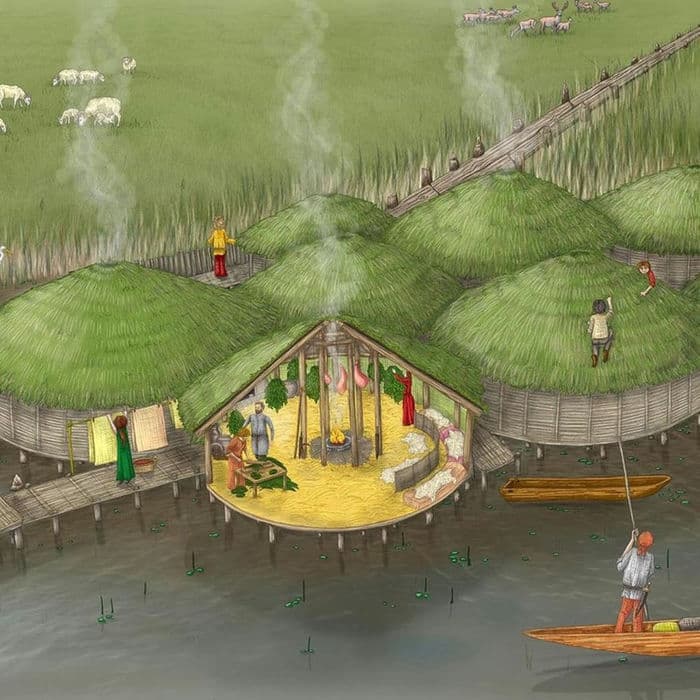
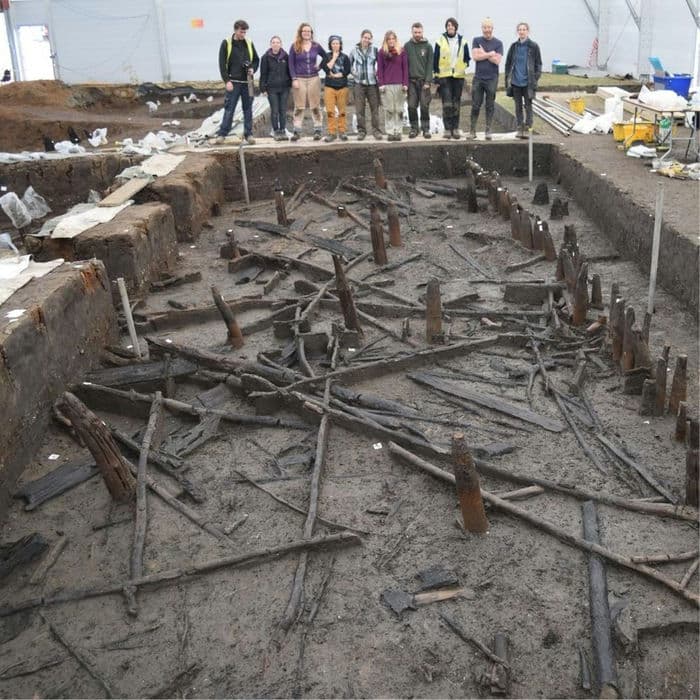
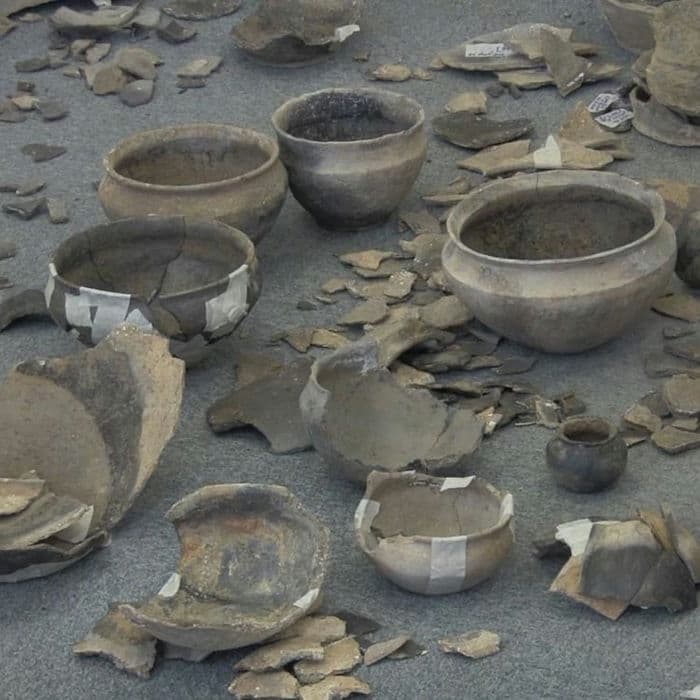
Frequently Asked Questions
- What makes Must Farm so significant?
- Must Farm is considered Britain’s best-preserved Bronze Age settlement due to the exceptional state of its dwellings and artefacts. The site’s rapid abandonment following a fire has preserved a wealth of information about Bronze Age life.
- What types of artefacts were found at Must Farm?
- A wide variety of artefacts were discovered, including pottery, wooden utensils, textiles, and metalwork. These items provide a comprehensive view of domestic life during the Bronze Age.
- Why is Must Farm called “Britain’s Pompeii”?
- The site is nicknamed “Britain’s Pompeii” because, like the Roman city, it was rapidly abandoned and preserved following a catastrophic event—in this case, a fire. This has left an almost intact snapshot of Bronze Age life.
- How was the Must Farm settlement preserved?
- The fire that destroyed the settlement caused the structures and artefacts to collapse into the river below, where they were quickly covered by silt. This anaerobic environment prevented decay and preserved the site remarkably well.
- Can the public visit Must Farm?
- While the excavation itself is not open to the public, findings from Must Farm are displayed at local museums, and the site is often featured in documentaries and exhibitions. Visitors can learn about the excavation through various media and museum displays.
Must Farm offers an extraordinary glimpse into Bronze Age Britain, with its well-preserved dwellings and artefacts providing a unique look at everyday life thousands of years ago. Whether you are an archaeology enthusiast or simply curious about ancient history, Must Farm’s finds are bound to fascinate and educate. This site, often compared to Pompeii for its remarkable state of preservation, stands as a testament to the sophisticated and vibrant community that once thrived there. Make sure to explore the exhibits and documentaries that showcase this incredible discovery.
